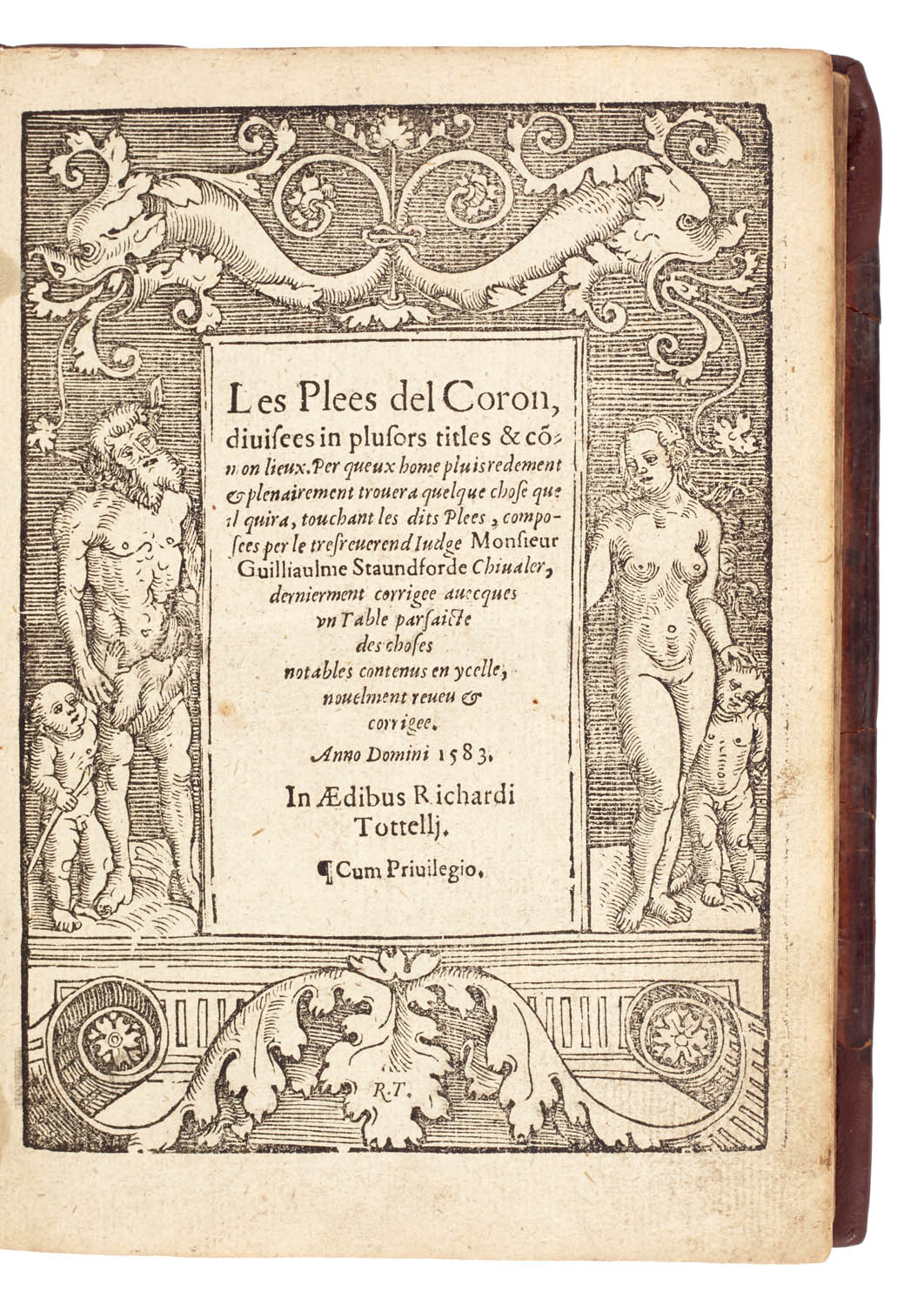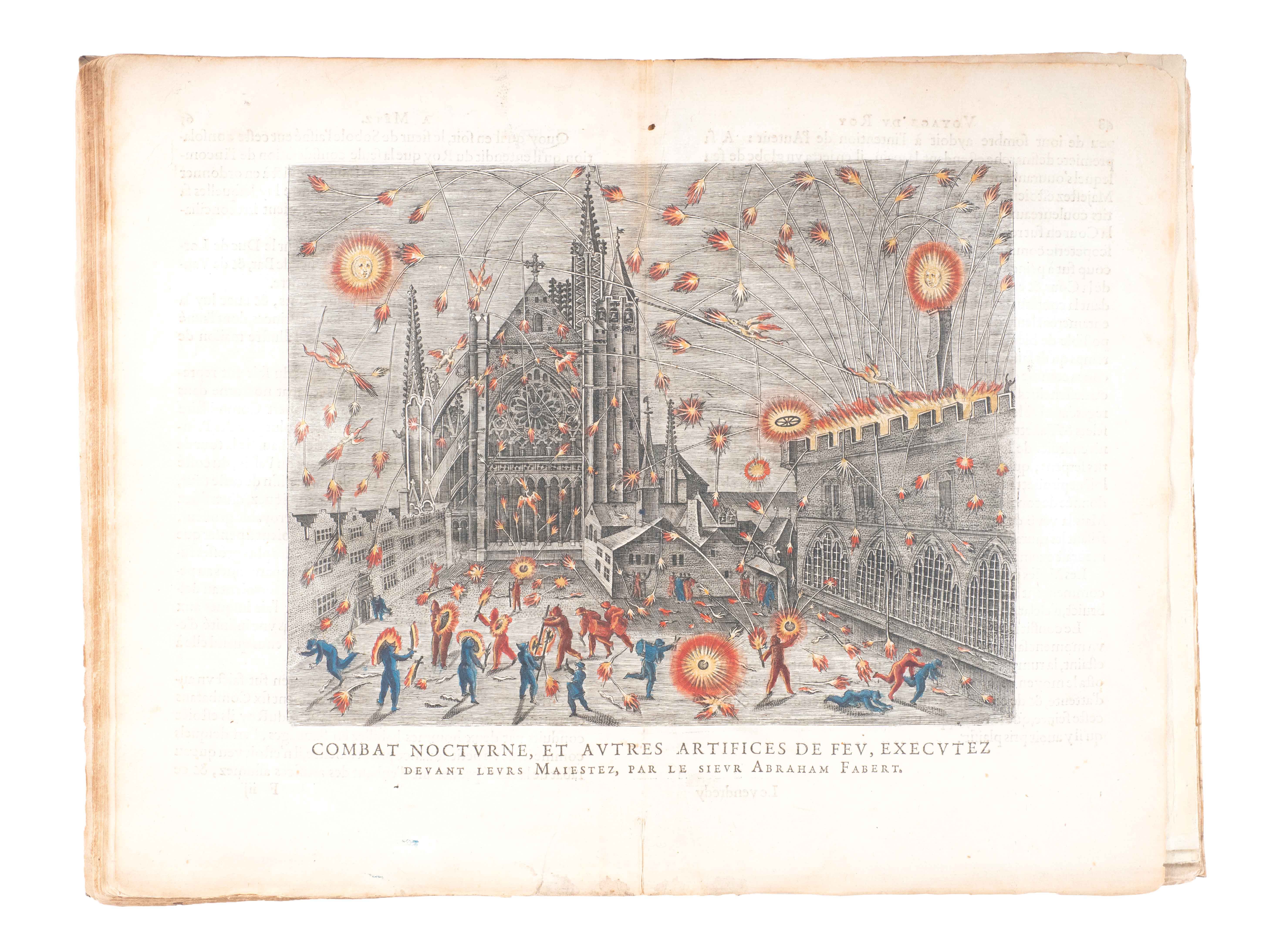
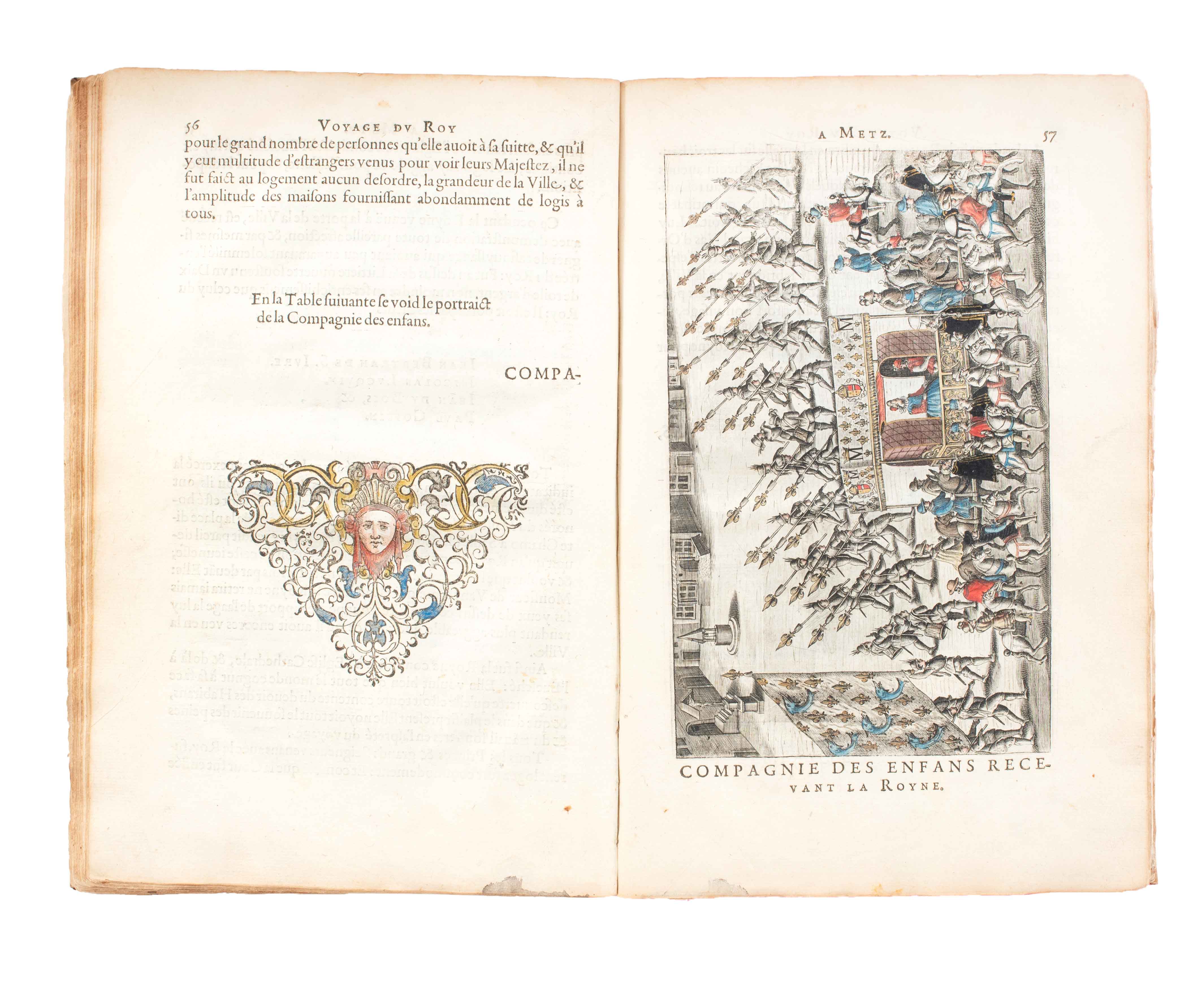
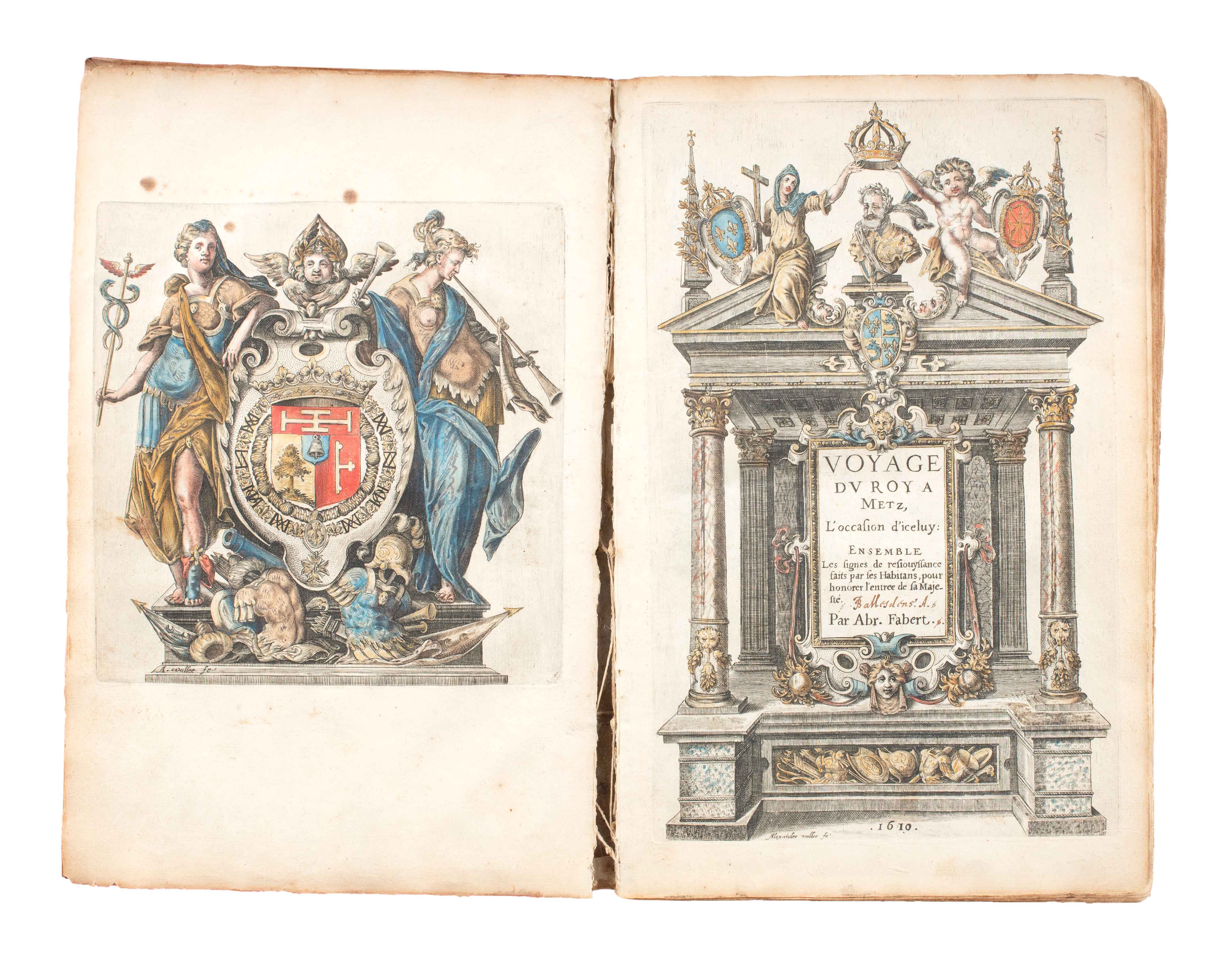

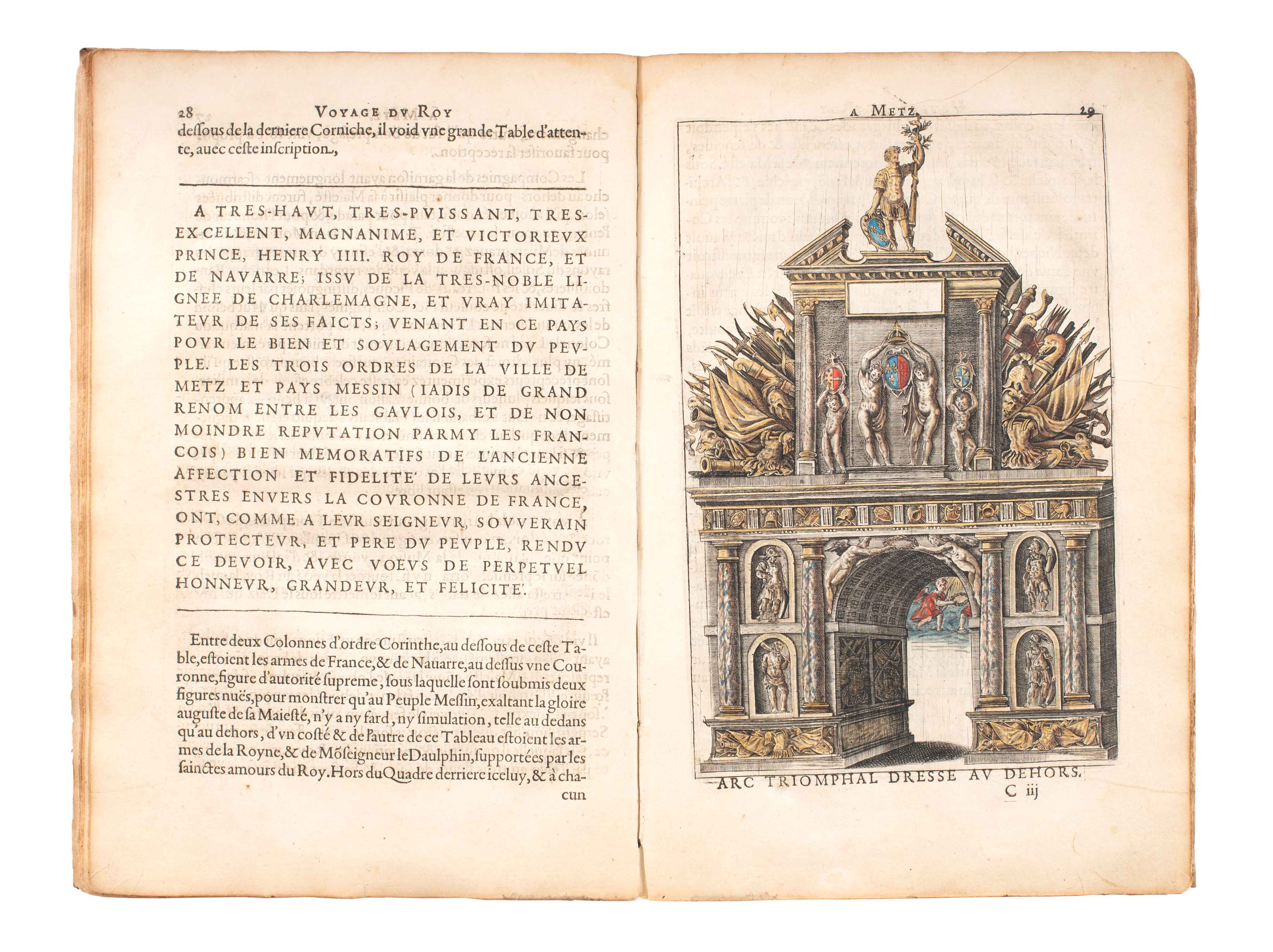
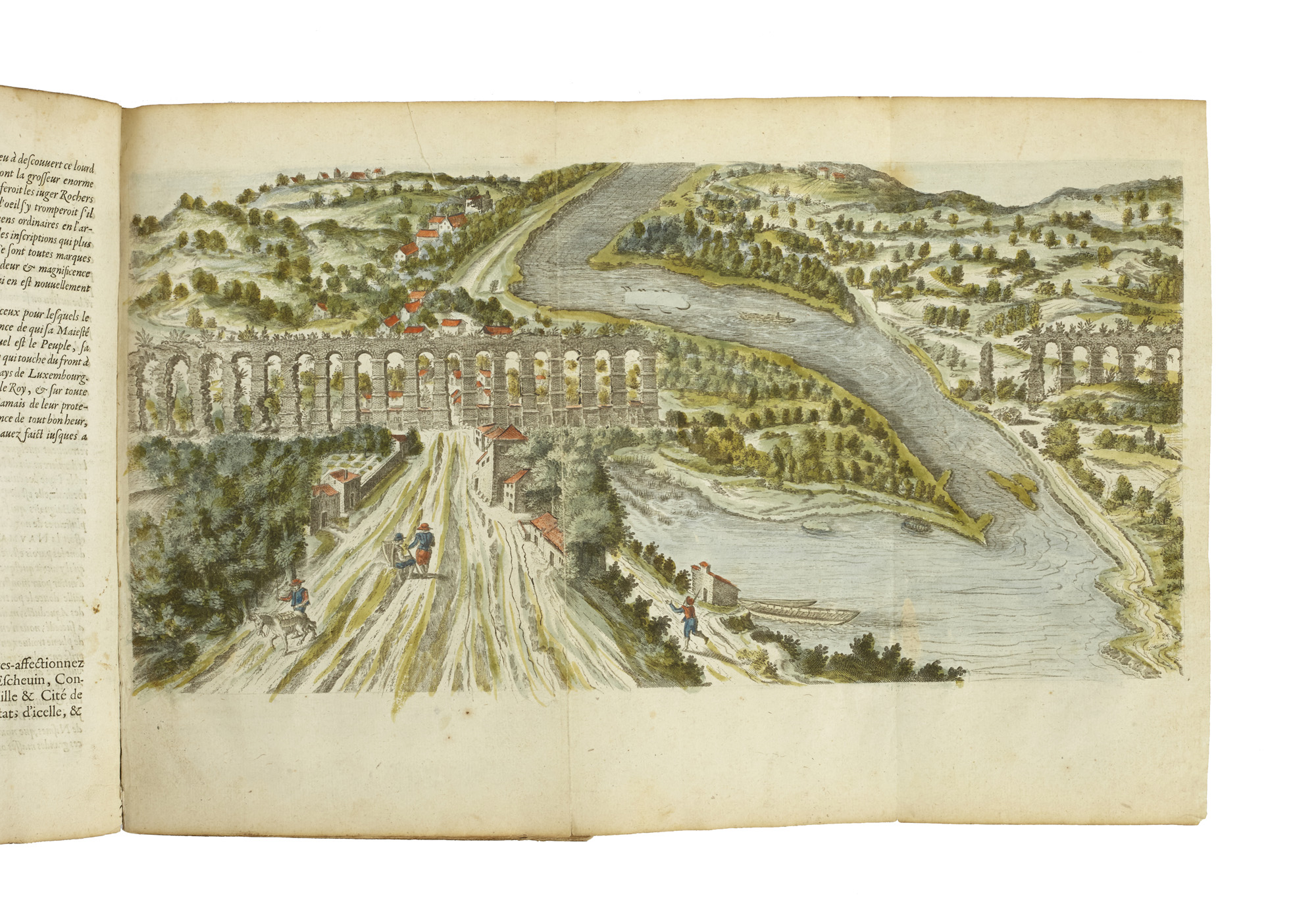
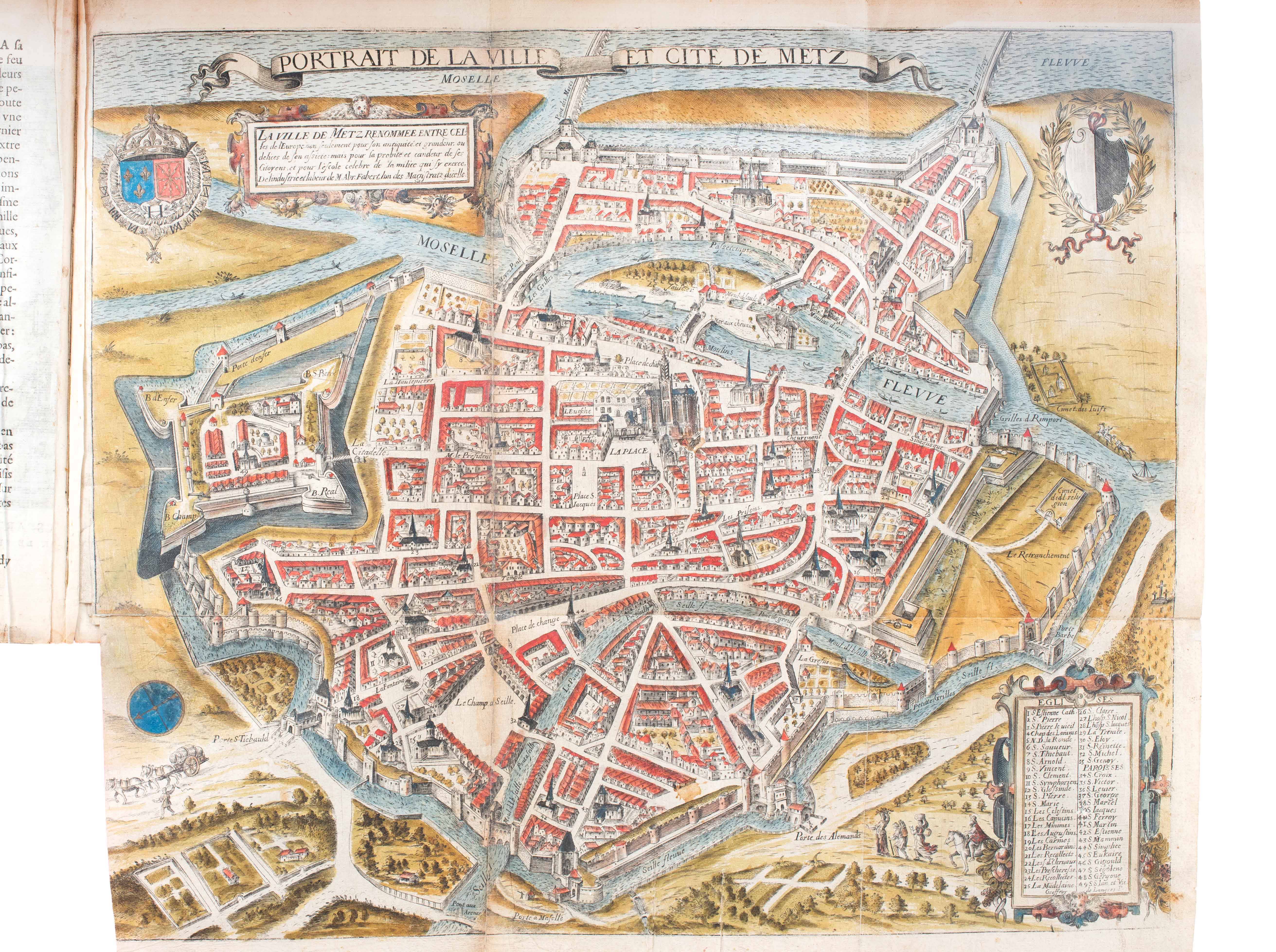

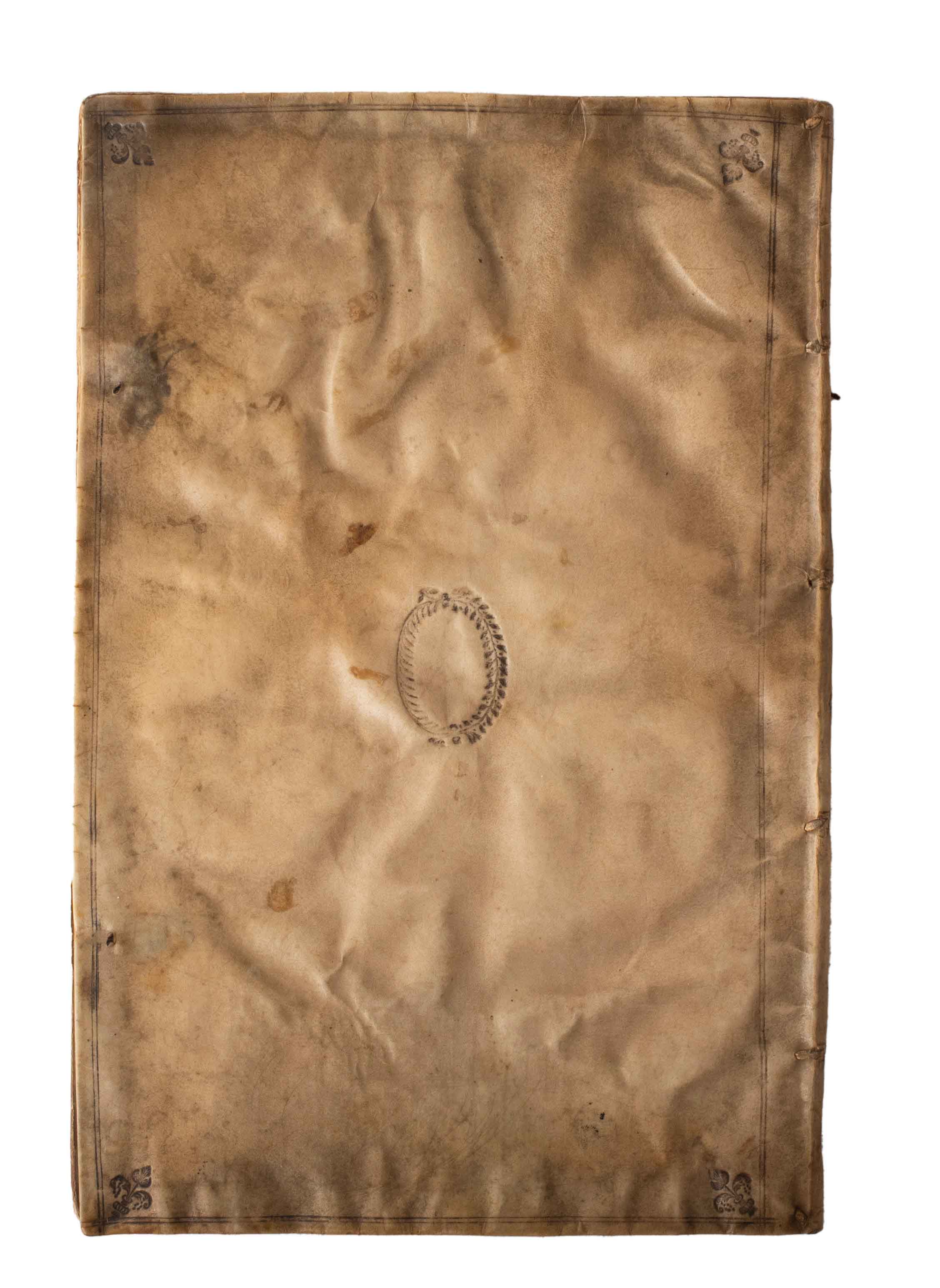
WITH CONTEMPORARY HAND COLOURING AND GILDING
FABERT, Abraham.
Voyage du roy a Metz, l’occasion d’iceluy: ensemble les signes de resiouyssance faits par ses habitans pour honorer l’entree de sa majesté.
[Metz, Fabert,] 1610.
Folio, pp. [xii], 72; engraved arms of the duc d’Épernon to verso of first leaf and engraved title-page (both by Alexandre Vallée), 3 folding plates (including 2 maps) and 15 engraved illustrations within the text, initials, head- and tail-pieces, all with handsome contemporary hand colouring and gilding; a few spots and marks, occasional slight staining to lower blank margins, short tear at foot of inner margin to pp. 66-67, neat repairs to folding maps with a few small splits at joints; very good in contemporary limp vellum, double-fillet border, central wreath ornament and corner floral motifs to covers, spine in compartments, gilt edges; slight staining and cockling to covers, a little damp staining to pastedowns; ownership inscription ‘Ballesdens A.’ to title.

Added to your basket:
Voyage du roy a Metz, l’occasion d’iceluy: ensemble les signes de resiouyssance faits par ses habitans pour honorer l’entree de sa majesté.
A splendid hand-coloured and gilt copy of the first edition of this handsome festival book commemorating Henri IV’s entry into Metz in March 1603, published seven years after the event and in the same year that Henri was assassinated by François Ravaillac.
The hand colouring suggests that it may have been a presentation copy to Jean Louis de Nogaret de La Valette (1554–1642), duc d’Épernon, to whom the work is dedicated, and it was later in the possession of the great bibliophile Jean Ballesdens (1595–1675). Governor of Metz and the Pays Messin, in northeast France, from 1583, the powerful duc d’Épernon was a staunch Catholic who had a difficult relationship with Henri IV, even being accused of involvement in the king’s assassination. The Voyage du roy a Metz professes the loyalty of the city and region to the king, and its attachment to France, and stresses the unity and harmony of its mixed population of Catholics and Protestants.
The work was one of the finest to come from the presses of the famous Metz printer and supporter of Henri IV, Abraham Fabert, who employed the artists Alexandre Vallée and Geoffroy de Langres to supply the handsome illustrations. In addition to representing battalions of infantry and cavalry, triumphal arches and other architectural pieces, and gold and silver gifts presented to Henri and his queen Marie de’ Medici, the engravings include images of Henri entering Metz on horseback, of Marie being carried in procession, and of a spectacular fireworks display and nocturnal combat held before the king and queen. The folding plates show the Roman aqueduct of Jouy-aux-Arches, which supplied Metz with water, a bird’s-eye-view of the city, and a map of the Pays Messin.
Provenance: with the elegant signature of Jean Ballesdens (1595–1675) to the title. Lawyer to the Paris parlement and secretary to Pierre Séguier, chancellor of France, Ballesdens is famous for renouncing his seat at the Académie française in favour of Pierre Corneille. He collected an impressive library of printed books and manuscripts, including Grolier bindings, which was sold after his death.
Brunet II, 1147; Destailleurs, 228; Firmin-Didot, 516; Ruggieri 352; USTC 6804798; Vinet 481; Watanabe-O’Kelly & Simon 1696.

